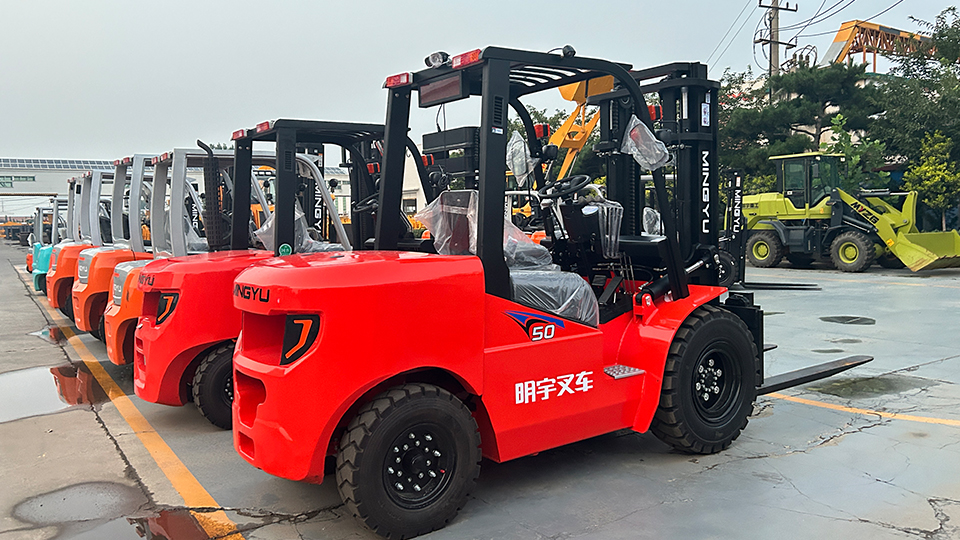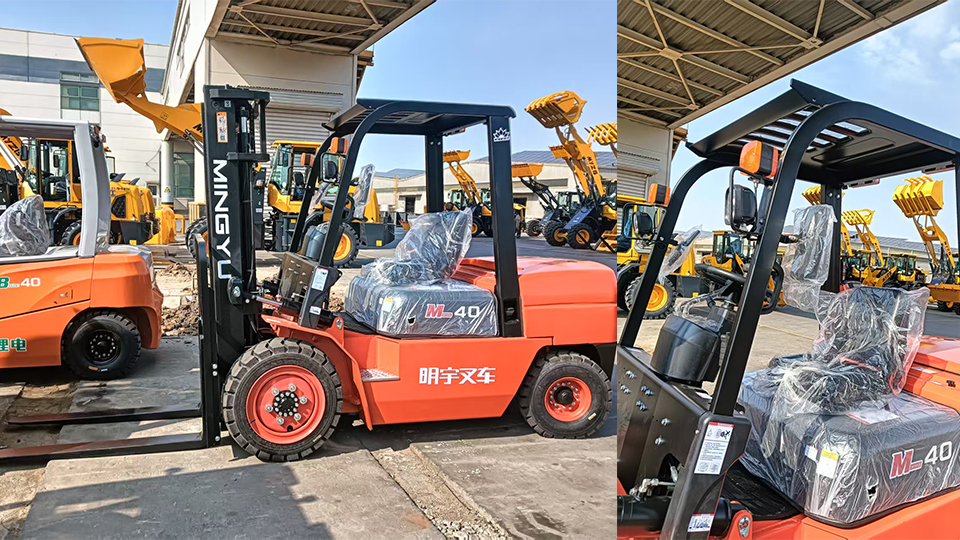
The Technical Genealogy of Mechanized Material Handling: When Was the Forklift Truly Invented?
The modern forklift truck, or lift truck, stands as one of the most indispensable pieces of machinery in global logistics and industrial operations.5 Its technical prowess—the ability to lift, maneuver, and vertically stack heavy loads with precision—is foundational to the efficiency of the modern supply chain, warehouse architecture, and manufacturing line. To pinpoint the exact date of the forklift’s "invention" is to oversimplify a complex, half-century-long technical genealogy. The machine we recognize today is the culmination of advancements in three primary fields: powered locomotion, hydraulic lifting mechanisms, and the unit load concept (standardized pallets).6 The evolutionary timeline places the critical breakthroughs between 1906 and 1930, with two companies, Clark and Yale & Towne, credited with the pivotal early designs that transitioned from simple powered platforms to the high-lift, fork-equipped truck.
I. The Early 20th Century Genesis: Precursors and Powered Platforms (1906–1917)
The technical impetus for the forklift began with the need to mechanize horizontal material transport, driven by the increasing scale of industrial production and the resulting labor bottlenecks in factories and rail yards.7 Manually operated equipment, such as sack trucks and dollies, proved inadequate for the volume and weight of the emerging mass-produced goods.
The Powered Industrial Truck (1906)
The first significant step was taken in 1906 when the Pennsylvania Railroad introduced a battery-powered platform truck at its Altoona, Pennsylvania, station.8 This vehicle, often cited as the first powered industrial truck or "electric mule," established the concept of self-propelled, non-road-going material transport.9

|
Technical Precursor |
Year |
Developer |
Key Innovation |
|
Battery-Powered Platform Truck |
1906 |
Pennsylvania Railroad / ELWELL PARKER ELECTRIC CO. |
Electrically powered horizontal transport; groundwork for the electric drive system. |
|
Hydraulic Lift Patent |
1913 |
William T. Harris |
Patent for a hydraulic system, a foundational technology for high-lift masts. |
|
Electric Bomb-Handling Lift Truck |
1915 |
Baker-Raulang |
Early motorized lifting device, though limited in scope and not a counterbalance design. |
|
The Tructractor |
1917 |
Clark Company |
First seated, gasoline-powered, counterbalanced truck. The most direct forklift ancestor. |
|
Low-Lift Platform Truck |
1919 |
Yale & Towne (via C.W. Hunt Co. purchase) |
Battery-powered platform that could lift a load a few inches off the ground using a screw-jack or small winch. |
These early powered industrial trucks were essentially low-platform, wheeled carts with an electric motor and battery power source, designed primarily for transporting goods horizontally over short distances. They addressed the locomotion problem but had only rudimentary, non-hydraulic lifting capabilities, often limited to raising a load a few inches for platform clearance.10
The Birth of the 'Tructractor' (1917)
The most pivotal pre-forklift innovation came in 1917 from the Clark Equipment Company of Buchanan, Michigan (an axle manufacturer).11 George W. Clark developed the "Tructractor," a small, three-wheeled, gasoline-powered vehicle designed to move materials and castings around his factory.12 While not equipped with forks or a mast, the Tructractor was revolutionary because it was the first seated, internal combustion (IC) engine counterbalanced industrial truck.13
Internal Combustion Power: Using a gasoline engine provided greater endurance and power than the early battery-electric models.
Seated Operation: Allowing the operator to ride vastly improved efficiency and productivity over the walk-behind platform trucks.
Counterbalance Principle: Although still a flat-bed platform, its design implicitly utilized the principle of counterbalancing the load over the front axle, a foundational concept for all subsequent forklifts.
Clark's initial intent was for internal use, but external interest was so high that the company began commercial production in the following years.14 The Tructractor solved the horizontal transport problem and established the standard for the truck's chassis design.
II. The Definitive Invention: The Mast and Forks (1920s)
The machine’s true identity as a "forklift" required a mechanism that could not only move loads horizontally but also vertically tier or stack them at height. This innovation emerged in the early 1920s.
The Vertical Cantilever Principle (1923)
The key component of the modern forklift—the vertical, telescoping mast and elevating forks—was introduced by Yale & Towne Manufacturing in 1923.15 Building on their earlier battery-powered low-lift platform trucks, Yale engineers developed a truck that:
Incorporated a Mast and Forks: It featured two metal forks that could engage a load (specifically, a skid or rudimentary pallet).16
Used an Extending Mast: This allowed the load to be lifted higher than the truck itself, enabling vertical stacking.
Employed Electric Power: The early design used an electric motor to power a screw-and-ratchet system to raise the forks, preceding the widespread adoption of hydraulics.17
This 1923 Yale model is often cited as the first truck to incorporate all three core elements of the modern lift truck: the truck body, the elevating mast, and the load-engaging forks.18 It technically solved the lifting and stacking problem, completing the transition from a mere motorized platform to a vertically oriented stacking machine.
The Technical Consolidation and Standardization (1924–1930s)
The mid-1920s saw a rapid consolidation of technical concepts:
Hydraulic Power: The adoption of hydraulic lifting systems was perhaps the most crucial technical leap.19 Hydraulic mechanisms, which utilize pressurized fluid (typically oil) to generate significant lifting force, replaced the slower, less powerful mechanical or screw-jack systems.20 This increased lifting capacity and speed dramatically, opening the door for taller stacking.
Internal Combustion Lift Trucks: In 1924, Clark released the Duat Tractor, its first internal combustion lift truck, further diversifying power options.21
Tiltable Masts: Manufacturers, including Clark and Yale, began incorporating tilting masts to aid in load stabilization. The ability to tilt the load backward slightly while transporting it prevented materials from sliding off the forks, significantly enhancing safety and maneuverability.
Shortened Wheelbases and Counterweights: Engineers refined the seated counterbalance design. By strategically distributing the mass of the truck and incorporating a heavy counterweight (often the engine block or the battery casing) over the rear axle, they could safely lift heavy loads cantilevered forward on the forks. This design is the definitive counterbalance principle underpinning approximately 85% of all modern forklifts.
The final piece of the invention puzzle arrived not from the truck's design, but from standardization in the load itself: the Standardized Pallet.
III. The Catalyst for Mass Adoption: The Pallet (1930s)22
The lift truck was technically capable, but its utility remained limited until its load-handling counterpart was perfected.23 The development of the standardized wooden pallet in the late 1930s was the commercial and logistical catalyst that transformed the forklift from a factory niche tool into an industrial behemoth.24
|
Component |
Technical Role |
Impact on Forklift Adoption |
|
Standardized Pallet |
Provides a four-way entry platform for the forks, unitizing hundreds of individual items into a single, movable "unit load." |
Made high-volume, rapid-fire loading, unloading, and stacking feasible across all logistics sectors. |
|
Hydraulic System |
Replaces mechanical lifting with fluid power. |
Dramatically increased lifting capacity, speed, and height, enabling the use of high-bay warehouses. |
|
Pneumatic Tires |
Provides cushioning and traction. |
Enabled use in outdoor yards and on uneven surfaces, broadening the forklift’s application beyond the smooth factory floor. |
The standardized 48” x 40” wooden pallet created the necessary intermodal compatibility: a load picked up by a forklift in a factory could be seamlessly loaded onto a boxcar, stacked in a warehouse, and unloaded by another forklift at a distribution center. The synergy between the high-lift truck and the standardized pallet system is the true moment the modern material handling industry was born.

IV. The Technical Acceleration: World War II and Beyond (1940s–Present)
World War II: The Great Accelerator
World War II provided the ultimate test and demand for material handling efficiency.25 The colossal logistics of the war effort—moving munitions, supplies, and food across continents—created an insatiable need for the forklift.26 U.S. military logistics depended heavily on the equipment supplied by companies like Clark, Yale, and Hyster.27 The massive scale of wartime operations not only popularized the technology but also drove rapid improvements in durability, lifting capacity, and standardization.
The Post-War Warehouse Revolution
Following the war, the design of warehouses evolved to capitalize on the forklift’s vertical stacking ability.28 This led to a focus on new design iterations:
The Narrow-Aisle Truck (1950s): As the cost of floor space increased, warehouses were designed with narrower aisles and taller racks.29 This necessitated the invention of the Reach Truck (Lansing Bagnall, 1954, now KION Group) and later the Turret Truck and Order Picker.30 These models abandoned the traditional counterbalance design for specialized stabilizing outriggers and often employed a mast that could extend or traverse forward (reach), allowing them to stack loads without turning the entire chassis.
Ergonomics and Safety (1960s–1980s): Increasing lift heights heightened safety concerns.31 Innovations became regulatory standards, including the Overhead Guard (operator cage) and the Load Backrest (preventing the load from shifting backward).32 Later, ergonomic considerations led to adjustable seats, intuitive controls (like the Hyster Monotrol pedal for directional control), and better visibility to reduce operator fatigue and injury.33
Modern Technical Convergence: Automation and Energy
Contemporary forklifts are technical marvels, integrating advanced engineering with information technology:34
Electrification: Modern electric forklifts, powered by high-density lithium-ion batteries or hydrogen fuel cells, have overcome the runtime limitations of earlier lead-acid models.35 They offer zero emissions for indoor environments and reduced total cost of ownership.
Hydraulics and Stability Control: Modern hydraulic systems are managed by sophisticated Stability Control Systems (SCS) that monitor speed, load weight, steering angle, and lift height. The system can automatically limit travel speed or tilt angle to prevent tip-overs.
Automation (AGVs and AGFs): The latest technical frontier is the Automated Guided Vehicle (AGV) or Automated Guided Forklift (AGF).36 These machines use various navigation technologies (LiDAR, magnetic tape, or vision-based guidance) to operate autonomously, driven by sophisticated warehouse management systems (WMS) and artificial intelligence (AI) to optimize material flow, particularly in repetitive or hazardous environments.
V. Conclusion: Defining the Invention
To answer the prompt, "When was the forklift invented?":
The conceptual and technical foundation was laid in 1917 by the Clark Tructractor, establishing the core principles of the seated, powered, counterbalance truck.37
The first machine to possess the distinctive, high-lift fork-and-mast assembly—the feature that separates it from a mere platform truck—was introduced in 1923 by Yale & Towne Manufacturing.38
The invention, as an economically viable and universally scalable industrial system, was finalized in the late 1930s with the widespread adoption of the hydraulic lifting mechanism and the standardized wooden pallet.39
The forklift is not a product of a single "Eureka!" moment but an iterative technical synthesis—a powerful symbol of how incremental engineering improvements, combined with logistical standardization, can fundamentally reshape the global economy.
Name: selena
Mobile:+86-13176910558
Tel:+86-0535-2090977
Whatsapp:8613181602336
Email:vip@mingyuforklift.com
Add:Xiaqiu Town, Laizhou, Yantai City, Shandong Province, China